First of all I want to be thank the team of Advanced Aquarist for allowing me to publish my second aquarium. After my NanoCube (16g.-64 l.) I realized I wanted to move to a larger one (42g.-160l.). For this transfer, I used the water and the rock from my smaller tank, but since the quantity was insufficient and I did not wish to wait for maturation, I took rock and water from the aquarium of a friend (316g.-2000 l.). This lets my corals continued with good growth.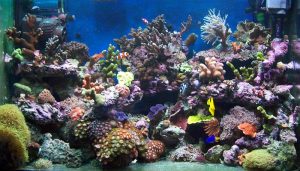
Setup
The aquarium is glass and it measures (31.5×15.75×16.7 inches 80x40x50 cm). Initially I had only SPS to support and so I organized the lighting with 8x36w PC’s, but they were not giving me the results I wanted. I changed to 2 MH of 150w jointly with 4x36w PC’s as light actinic supplement.
The circulation of the water is realized by means of a tunze Stream of 7000 l/h adjustably connected to a Multicontroller that creates alternating current and for being such a small aquarium, this one covers completely all the zones. To create the fluctuations, I have placed a bomb of 1000 l/h faced. The system is a Pure Berlin (BB). For biological filtration I had an approximate whole of 20 kg of alive rock (I have never weighed it) accompanied of a mangrove. The mechanical filtration is a skimmer BiostarFlotor de Aquamedic with an OR of 1250l/h. The circulation of the water is provided by means of a tunze Stream of 7000 l/h adjustably connected to a Multicontroller that creates alternating current and for being such a small aquarium, this one covers completely all the zones. To create the fluctuations, I have placed a bomb of 1000 l/h faced.
Lighting
The lighting consists of 2 Mh of 150W with bulbs of 14kºK and 4x36W PC’s. I knew that alone a MH could already cover the whole aquarium, but I installed two to have more zones of light and not to leave dead angles. They are positioned 10cm above the surface of the water. It ignites at 12:00 pm for the actínics, at 13:00 pm for the HQIs, at 23:00 pm the HQI’s go out and at 24:00 pm the actínics go out.


Equipment
The rest of the setup is composed of a calcium reactor equipped with Aquamedic substrat and mixed with magnesium of Grotec. It works during the whole day and with CO2 during 90 minutes in the evening. The evaporation of the aquarium is controlled by an osmolator that is connected to a peristaltic pump that feeds a reactor of Kalk. Since the temperature is very high due to the lighting there is a connected Temperature Controller that takes charge driving a fan of 30w, which supports the temperature between 25 and 26 degrees C.
Troubles
The biggest problem that I have suffered was an attack of nudibranchs that almost destroyed my population of montiporas. It was a struggle without end; first eliminating them every night with a syringe, but every night they were appearing again. Finally I tried with Levamisol, to the cost of that died many small invertebrates. And the nudibranchs still continued to live. I continued withdrawing them manually. After one month they started going at last and two months later they disappeared. Now I have been clear of them for 2 months. Finally I can say that my montiporas are safe! Not if it was the Levamisol, but surely it helped very much in its disappearance.




Inhabitants:
Fish
- One pair Amphiprion ocellaris.
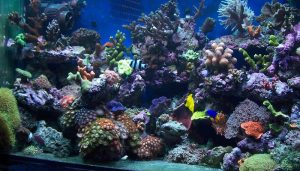
- 1 Pseudochelinus hexataenia.
- 1 Dascyllus aruanus
- 1 Chrysiptera cyanea
- 1 Juvenile Zebrasoma flavencens.
Corals
Polyps and soft corals:
- Several colonies of zoanthus. (15 varieties)
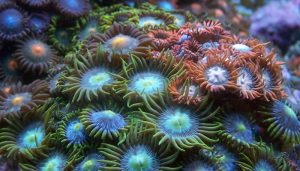
- Xenia pumping
- Pachiclavularia violacea
- Network actinodiscus
- Blue actinodiscus
- Orange ricordea Florida
- Flowery Blue ricordea with green bubbles
LPS:
- Favia
- Lobophyllia




- Caulastrea curvata
- Caulastrea furcata
- Alveopora
- Acantastrea
- Micromussa minus
- Euphyllia paradivisa
- Scolymia



- Plerogyra
- Blastomussa
SPS:
- 3 colonies of Stylophora
- 3 varieties of Porites in block and 3 in branch.
- 5 varieties of montipora in branch (Blue, with brown polyps, Orange, Green and green-yellow)
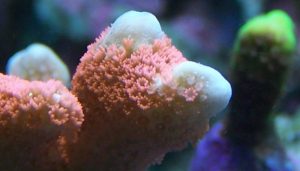
- 4 varieties of montipora plate (Orange, violet, green-fluo and green)
- 7 varieties of Acropora
- 2 colonies of Seriatopora histrix
- 1 Turbinaria reniformis
- Cypastrea
Other:
- 1 RBTA


- 2 tridacna Maxima
- 1 Hippopus hippopus
- 5 hermit crabs
- 1 hemerald crab
- groups of stomatellas and of small snails.
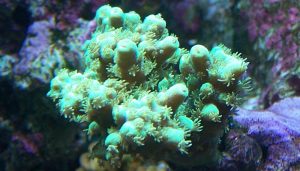





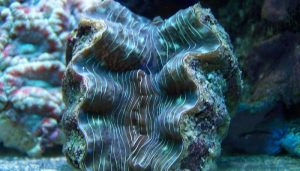

0 Comments